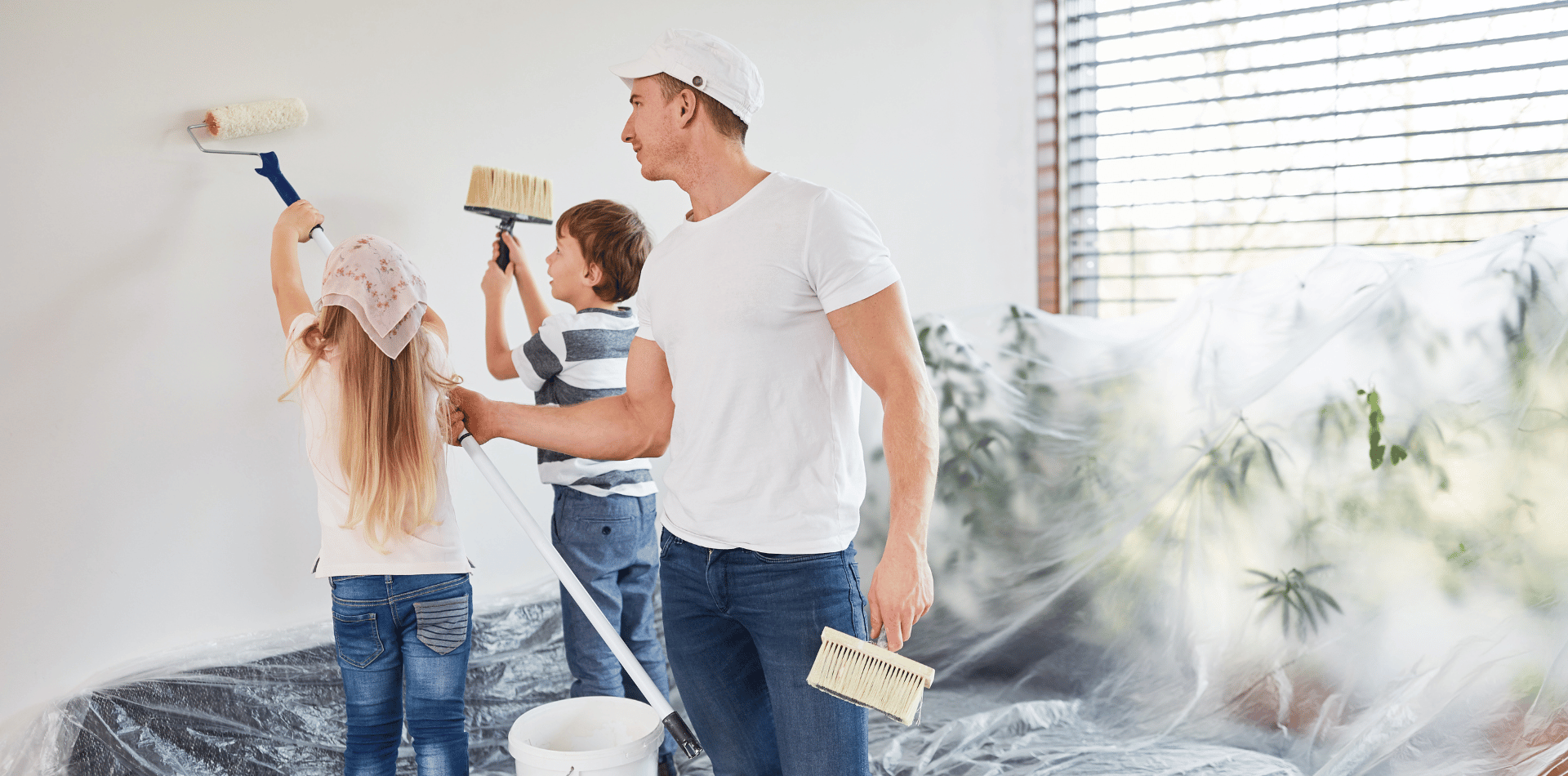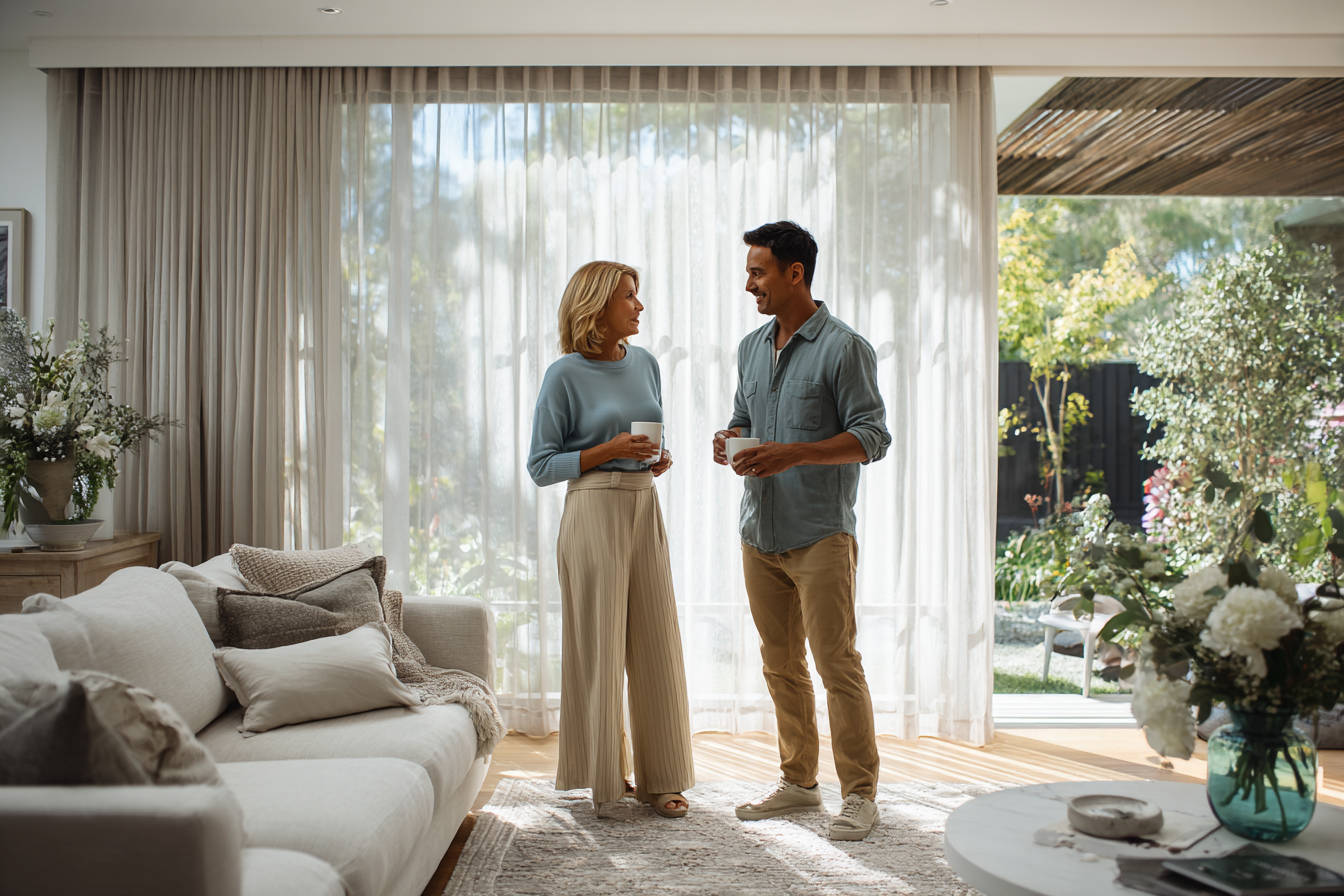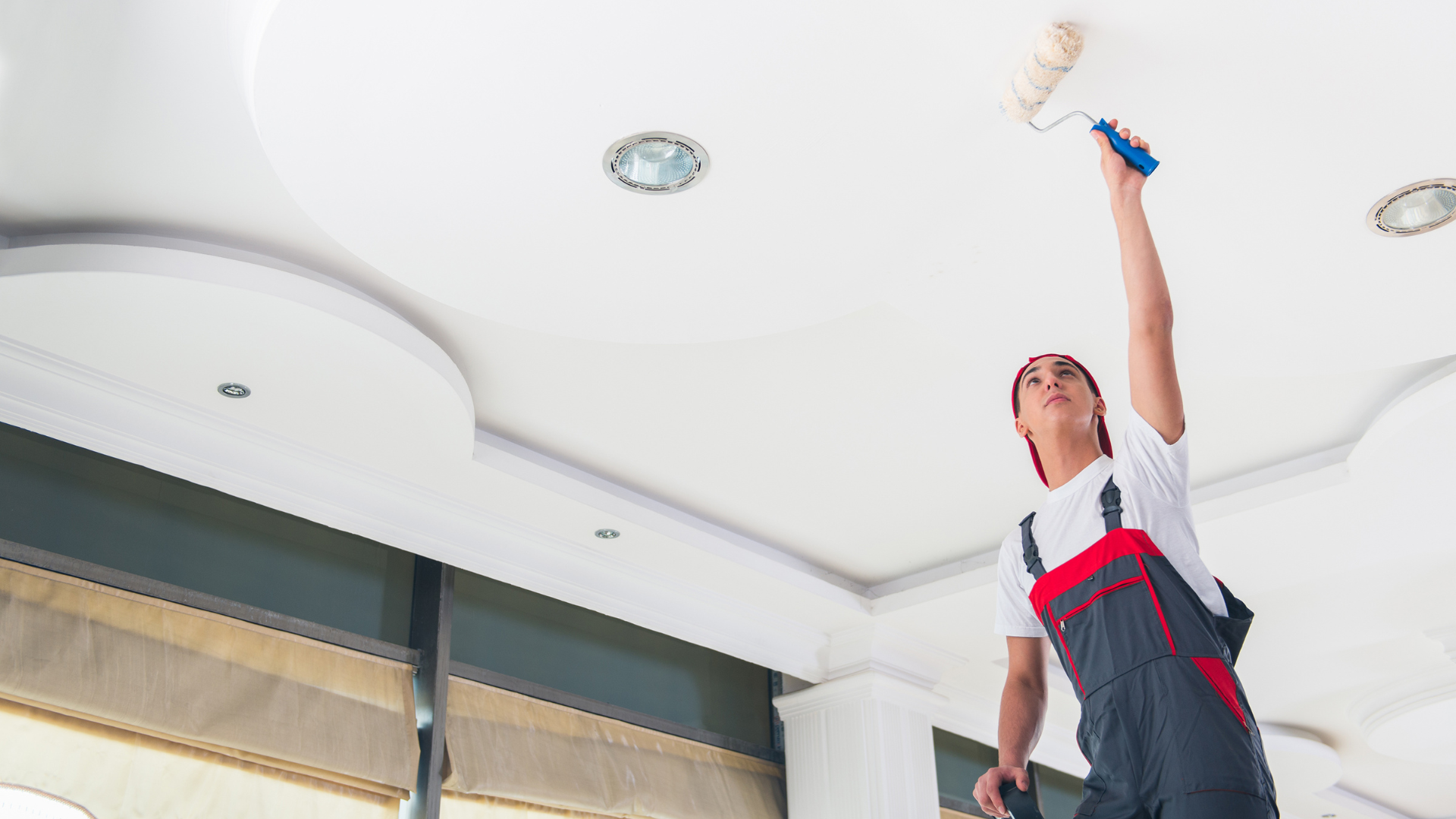Important safety considerations for children and pets when painting your property.

When painting your property, it's crucial to prioritise safety, especially when children and pets are involved.
Painting projects can introduce a variety of hazards, from toxic fumes to physical dangers.
Let's look at a comprehensive overview of safety considerations to ensure the well-being of your family and pets during painting activities.
Choosing Safe Paints
Opt for non-toxic, low-VOC (Volatile Organic Compounds) or zero-VOC paints.
These options minimise exposure to harmful chemicals that can affect air quality and health, making them ideal for households with sensitive individuals, children, and pets.
1. Low-VOC and No-VOC Paints: Volatile Organic Compounds (VOCs) are chemicals found in many paints that can cause health issues, such as headaches, dizziness, and respiratory problems. For safer indoor environments, opt for low-VOC or no-VOC paints.
2. Non-toxic Formulas: Especially for children's rooms and areas frequented by pets, select paints labeled non-toxic, which are free from heavy metals and harmful chemicals.
Preparing the Area
The foundation of any safe painting project is thorough preparation.
Start by informing everyone in the household of the painting schedule and establish clear safety guidelines for children and pets. Designate specific play areas away from the painting zone to keep them safe and occupied.
Before painting begins, remove furniture and personal items from the area or move them to the centre of the room and cover them with drop cloths. This step reduces the risk of damage and exposure to paint and chemicals.
Use drop cloths, plastic sheeting, or old newspapers to protect floors, fixtures, and any furniture that can't be removed. Secure these coverings with tape to prevent slippage and accidental exposure.
1. Ventilation: Ensure the area is well-ventilated to dissipate fumes. Open windows, use fans, and keep doors open to promote air circulation.
2. Secure the Area: Restrict access to the painting area for children and pets. Use safety gates or close doors to prevent entry. Covering the floor with drop cloths or plastic sheeting can also protect against spills.
3. Remove Hazards: Before starting, remove any small objects, tools, or materials that could be ingested or pose a choking hazard.
During Painting
Maintain adequate ventilation throughout the painting process to disperse paint fumes and promote fresh air circulation. Open windows, use fans, and keep doors open to ensure a well-ventilated workspace.
Create safe zones for pets and children, far from the painting area, ideally in a different part of the house or outside if the weather permits. This precaution prevents accidental ingestion of paint or exposure to harmful fumes.
Clear the painting area and pathways of any clutter, tools, or equipment that could pose trip hazards. Ensure a clean and organised workspace to prevent accidents.
Store paint cans and other materials securely, out of reach of children and pets. Ensure lids are tightly closed when not in use to prevent spills and limit exposure to paint fumes.
Select painting tools that are safe and appropriate for use around children and pets. Avoid tools with small, detachable parts or sharp edges. Soft-bristled brushes and rollers are ideal for preventing accidents.
Wear protective gear, including gloves, masks, and safety glasses, to minimise exposure to paint and dust. Ensure that anyone who comes into contact with the painting area is similarly protected.
Beyond choosing low-VOC paints, use air purifiers and regularly refresh the air in the painting area to further reduce the presence of fumes and ensure a more pleasant environment.
Place paint cans on stable surfaces and use paint trays to avoid spills. Keep rags or paper towels handy for immediate cleanup of any accidental spills or drips.
Regularly clean up the workspace, disposing of used materials and wiping down surfaces. This practice not only maintains a safe environment but also makes the final cleanup easier.
1. Supervision: Never leave paint materials unattended. Children and pets are curious and may come into contact with wet paint or painting tools.
2. Protective Gear: Wear appropriate protective gear, such as gloves, masks, and safety glasses, to minimize exposure to fumes and chemicals. Ensure that children and pets are kept away from the painting area to avoid accidental exposure.
3. Safe Storage: Store paint and related materials out of reach of children and pets. Ensure lids are securely fastened, and materials are kept in a locked cabinet or room.

Post-Painting Safety
Respect the drying times recommended by the paint manufacturer.
Restrict access to the painted area until it's completely dry to avoid smudges, footprints, or pawprints on fresh paint.
After the project is complete, conduct a thorough cleanup. Safely dispose of or store painting supplies, remove coverings, and return the space to its original state. Make sure the area is well-ventilated until the paint is fully cured.
Ensuring the safety and health of everyone involved in a painting project requires meticulous attention to detail, not only during the painting process but also in the aftermath.
1. Drying Time: Allow adequate drying time for the paint before allowing children and pets back into the area. Follow the manufacturer's recommendations for drying times.
2. Clean-Up: Properly dispose of or store painting supplies. Clean brushes, rollers, and trays in a safe area away from family and pets. Check for and remove any paint drips or spills that could be hazardous.
3. Monitoring for Reactions: After the project, monitor children and pets for any signs of irritation or allergic reactions. Symptoms can include coughing, sneezing, skin rashes, or difficulty breathing.
After painting, it's crucial to allow enough time for the paint to dry thoroughly.
This step is especially important in homes with children and pets who may touch or lean against the surfaces. Follow the paint manufacturer's recommended drying times, which can vary depending on the type of paint and the conditions in your home, such as humidity and temperature.
Even after the paint has dried, odours and residual VOCs can linger in the air.
Continue to ventilate the area for several days post-painting by keeping windows open and fans running. This ensures that any remaining fumes are expelled, maintaining indoor air quality and making the environment safe for sensitive individuals, children, and pets.
Final Cleanup: A Critical Safety Step
Once the paint is dry, and the area is properly ventilated, conduct a final cleanup.
This involves safely disposing of or storing leftover paint and cleaning tools. Ensure that paint cans are sealed and stored in a cool, dry place out of reach of children and pets. Wash brushes, rollers, and trays with soapy water and store them properly for future use. Remove all drop cloths, tape, and plastic sheeting, checking for any spills or splatters that may have been overlooked.
After cleaning up, do a thorough inspection of the painted area and surrounding spaces. Look for any paint splatters on the floor, furniture, or other surfaces that could pose a risk to children and pets. Ensure that all tools and materials have been removed and that there are no sharp objects or hazardous items left behind.
When reintroducing children and pets to the newly painted area, do so gradually. Keep an eye on them to ensure they do not touch or lick the surfaces. Observe for any signs of allergic reactions or discomfort due to residual fumes, particularly in pets and young children who may not be able to communicate their discomfort.
Finally, maintaining a safe environment after a painting project extends beyond the immediate cleanup.
Regularly check the painted areas for chipping or peeling paint, especially in older homes where lead-based paint may have been used previously.
Ensure that any such issues are promptly addressed to prevent ingestion of paint chips or dust by children or pets.
Painting your property doesn't have to be a hazardous task if proper safety measures are taken.
By choosing safe paints, preparing the area, maintaining vigilance during the project, and carefully cleaning up afterward, you can minimise risks to your children and pets.
Always prioritise safety to ensure that your painting project is successful and safe for everyone involved.
Painting your house can refresh and revitalise your living space, but it should be undertaken with careful consideration of the safety and health of all occupants, including pets and children.
By following these guidelines—from preparation and paint selection to cleanup and post-painting care—you can ensure a successful and safe transformation of your home.
Remember, the key to a healthy home environment is vigilance, proper planning, and adherence to safety practices throughout every step of the painting process.





